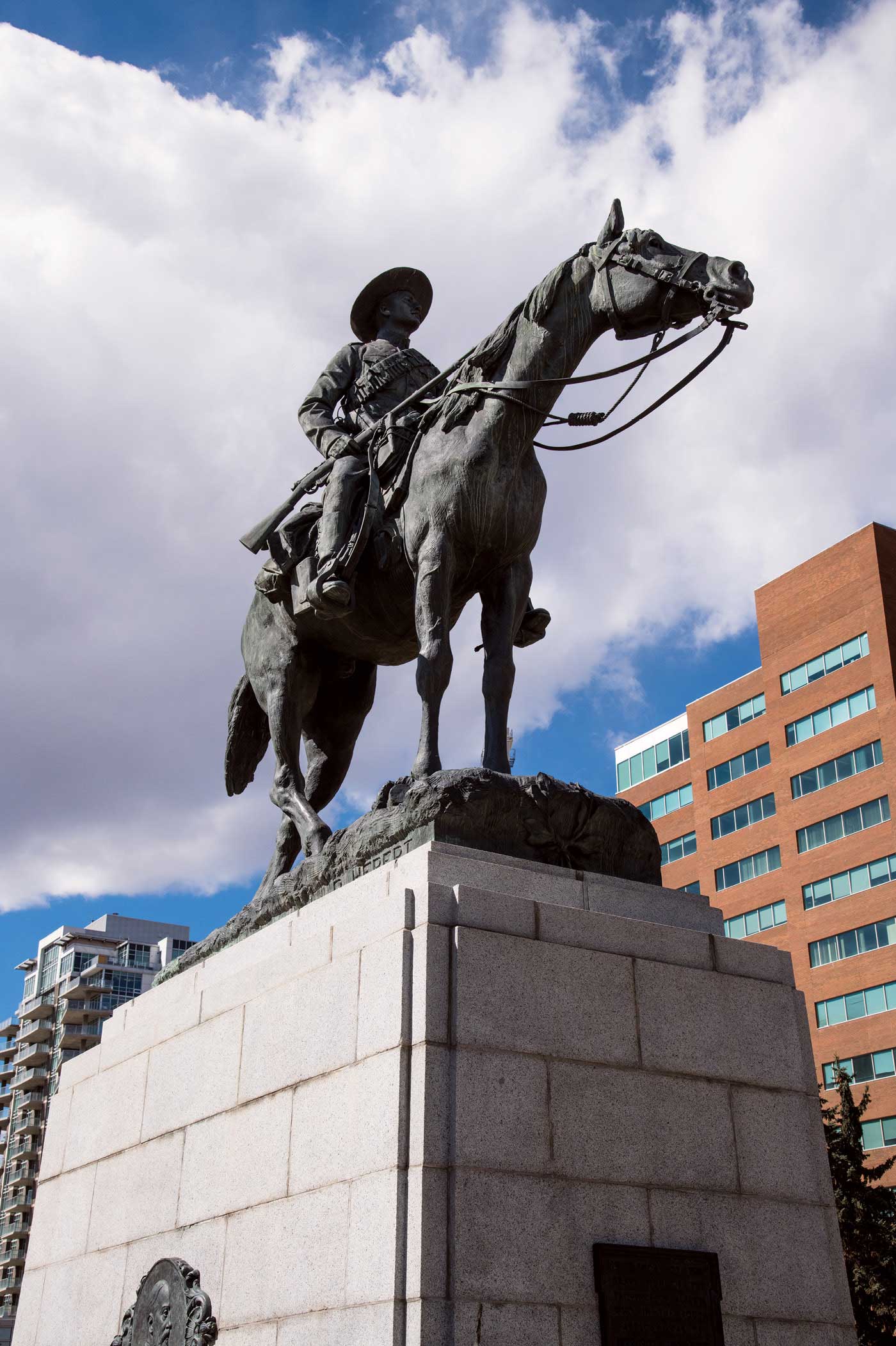
Title: Boer War Memorial, commissioned in 1911, unveiled in 1914.
Artist: Louis-Philippe Hébert (1850-1917).
Medium: Bronze on granite base.
Size: 35-feet high.
Location: Western side of Central Memorial Park, between 12 and 13 Avenues S.W.
Note: Part of the City of Calgary Public Art Collection.
Everything about this bronze sculpture by Quebec artist Louis-Philippe Hébert suggests an elevated purpose. The horse and rider are one-and-a-half times life-size, the rider sitting with ease as the horse comes to a standstill on a rise, head lifted, ears forward, focused in the direction of a distant sound. An upward diagonal trajectory is repeated in the horse’s neck, the angle of the rifle, the lift of the rider’s chin and the tilt of the flat-brimmed Stetson.
The South African War Memorial, as it was then called, was unveiled in June 1914 before a crowd of thousands who gathered in Central Memorial Park for the grand ceremony. In later years, the monument became known as the Boer War Memorial.
But the story of the statue really begins in 1909, when a lone man was found on the out-skirts of the city, frozen to death. Papers on his body revealed he was a veteran of the South African War, having served in Lord Strathcona’s Horse, a regiment of Western Canadians who volunteered to defend the Empire in South Africa in 1900.
Calgary veterans collected funds to give their comrade a proper burial. When his family in England learned of their kindness, they repaid the men, who in turn put money toward a memorial. The City of Calgary came through with additional funds and, in 1911, the city’s first major commission of public art was offered to Hébert, then at the peak of his career. It was to be his first and only equestrian statue and he took great care to get the details right.
Lord Strathcona’s Horse was an unusual military regiment of cowboys, ranchers, mounted police, prospectors and frontiersmen who knew how to survive in the foothills and on the open prairie. Hébert accurately modelled the uniform and gear they used, including the western saddle, long boots and spurs, leather ammunition bandolier and signature Stetson hat. Wealthy cattleman Pat Burns, one of the founders of the Stampede, sent one of his ponies to Hebert’s studio in Quebec. Hébert also visited Calgary to watch Alberta working horses in their home environment.
Captain Thomas Henry Johnson modelled for Hébert in Quebec (assigned by the military), while in Calgary the artist had Eneas McCormick of the Riley & McCormick family pose for him in a Boer War uniform. The goal was to honour the character of “a soldier from Alberta,” rather than make a portrait of an individual. To that end, Hébert applied the skills and techniques he had used to make monuments of royalty and statesmen and added the challenge of an equestrian statue, a genre used since Roman times to glorify rulers and military leaders. Inspired by a lone soldier almost forgotten, the artist created a 35-foot-high enduring memorial.
